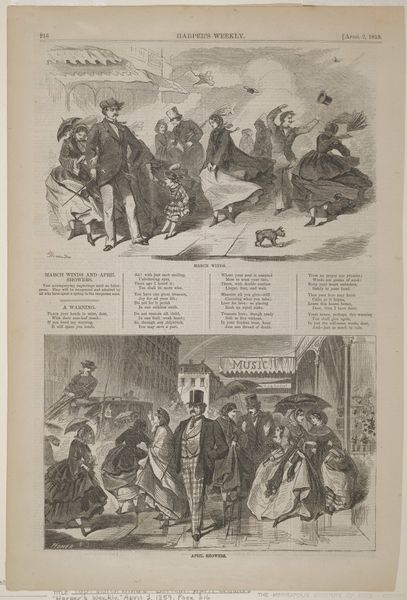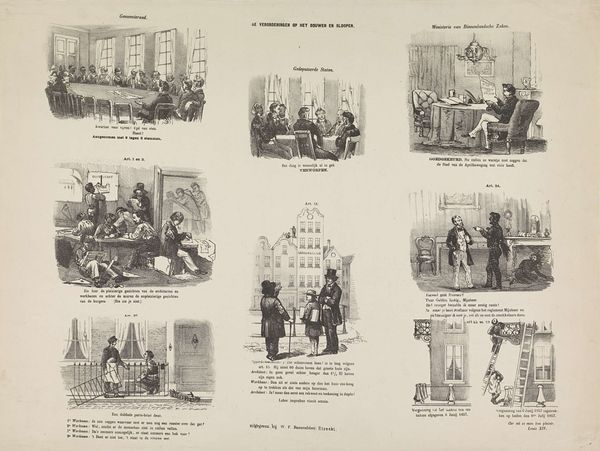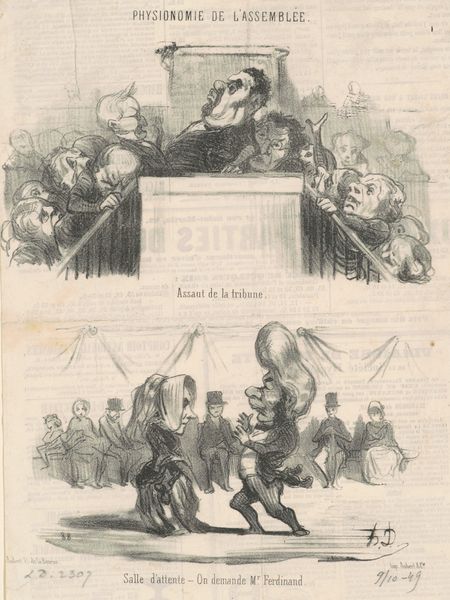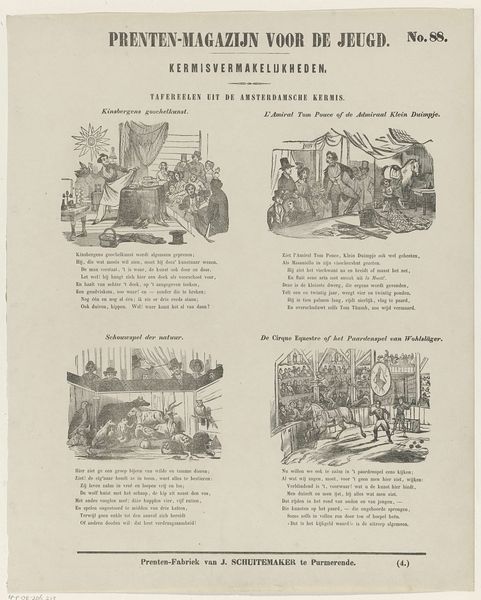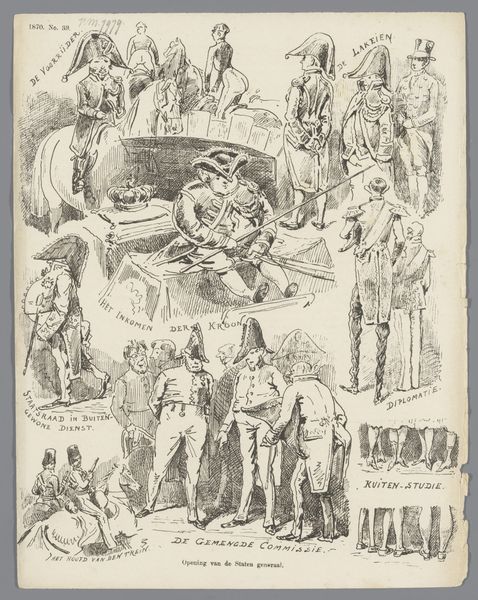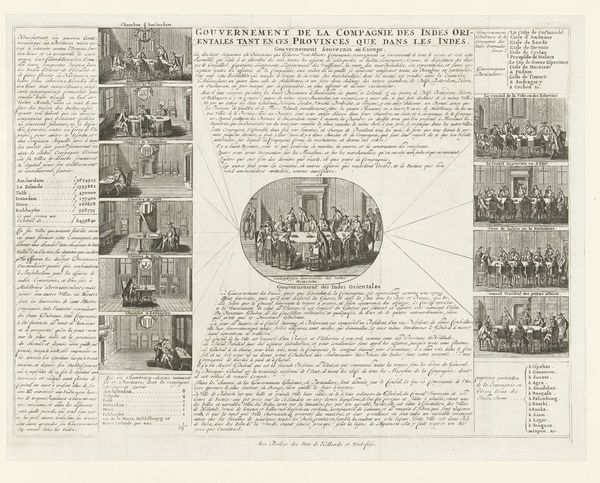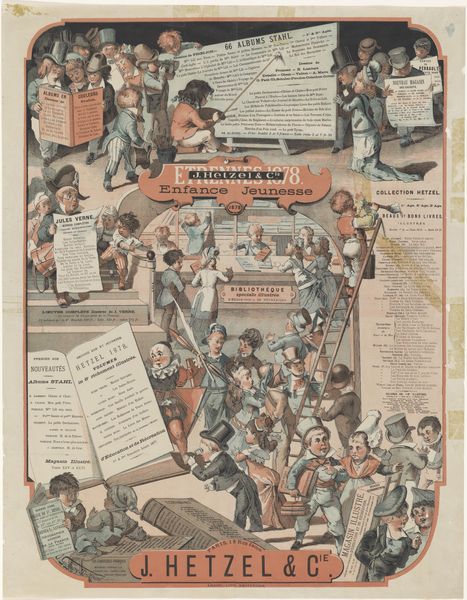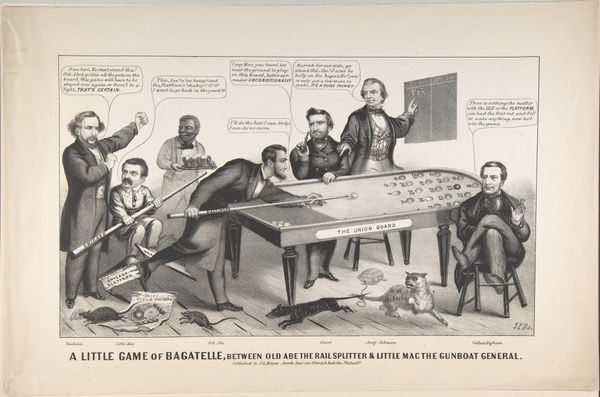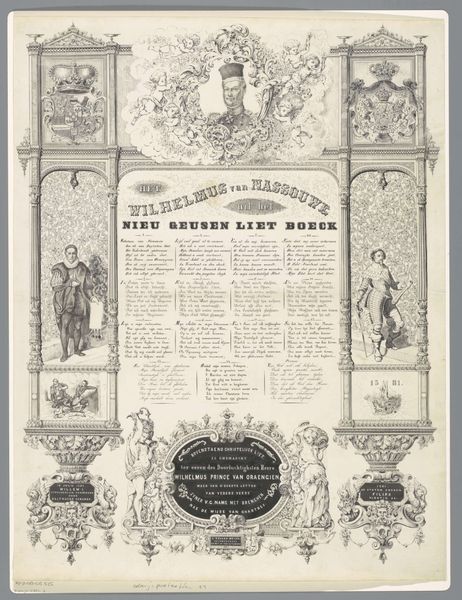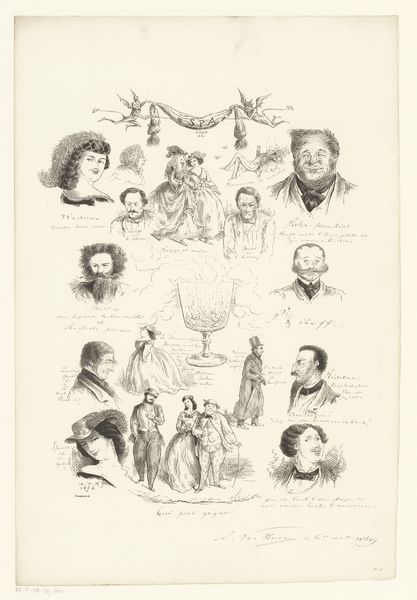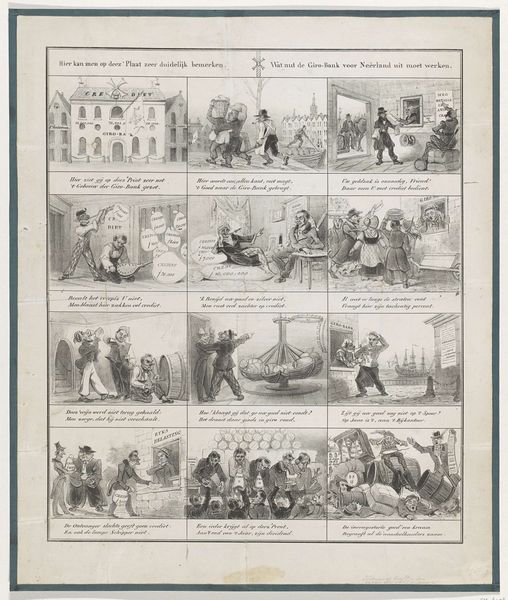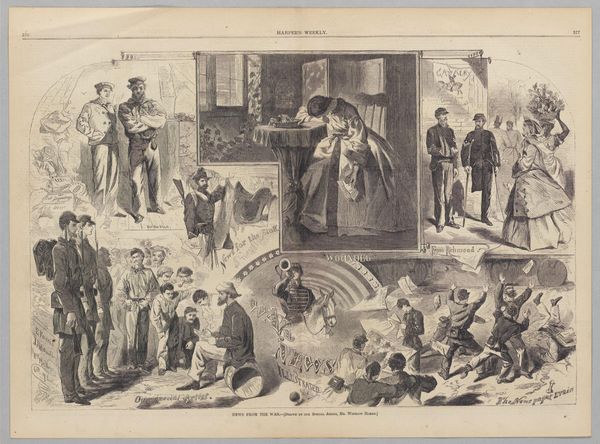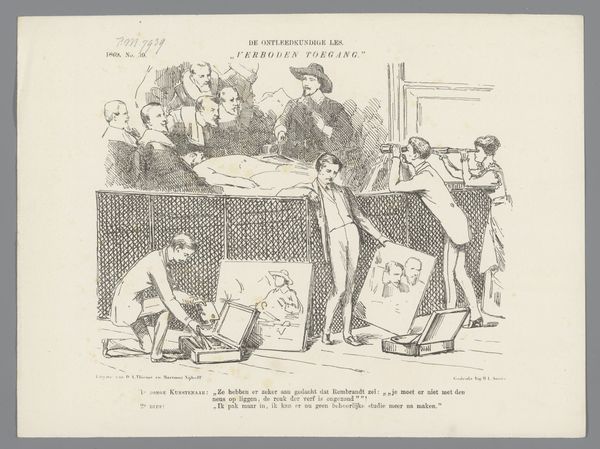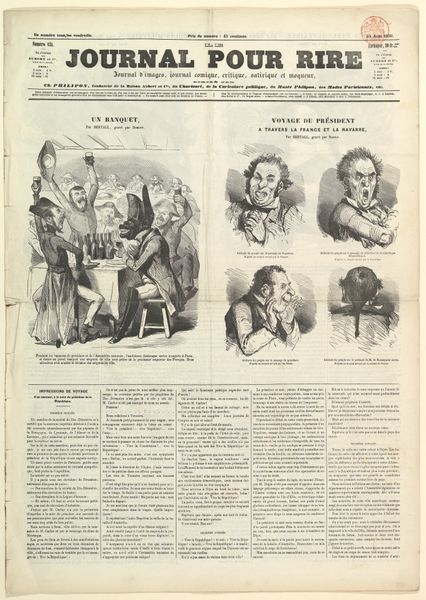
graphic-art, print
#
graphic-art
#
comic strip sketch
#
16_19th-century
#
comic strip
# print
#
caricature
#
history-painting
#
editorial cartoon
Dimensions: height 398 mm, width 535 mm
Copyright: Rijks Museum: Open Domain
Curator: Here we have a political cartoon from 1879, titled "Spotprent op Lodewijk Pincoffs". It's an anonymous print. What strikes you about it? Editor: It's busy! A real hodgepodge of scenes all crammed together. It feels chaotic, like a scandal unfolding in real-time. Curator: Precisely! Pincoffs was a controversial figure involved in railway speculation and accused of fraud, so the artist here employs caricature to expose the spectacle around the scandal. Look closely at the billiard table at the center. It says “Afrikaansch-Holl. Zakkenbillard," which translates to “African-Dutch pocket billiards,” a loaded term reflecting Pincoff's company and its reach into South Africa. Editor: Ah, that's interesting. I was initially drawn to the details – the lithographic print quality, the density of the composition—but the layers of text on that billiard table certainly indicate a more specific meaning. I’m now seeing these individual vignettes around the edges are probably alluding to various aspects of his scheme? The figure on the boat is probably an allusion to this South African scheme? Curator: Absolutely. Each numbered scene points to a different aspect of Pincoffs’ activities and failures. The "Programma" listed at the top promises an "Escamotage Dramatiek, Biologie, Optiek en Leger de Main”—a dramatic illusion using biology, optics, and sleight of hand. A harsh accusation implying manipulation and deceit. This wasn't simply about his company collapsing, but the public trust that was destroyed with it. The whole thing really functions as a critical review of Pincoffs' business activities. Editor: The use of accessible graphic form here is key, and clearly crafted for widespread consumption. The cheap printmaking, the numerous vignettes with captions, the central placement of the billiard table… It makes it pretty easy to grasp this story even if you couldn't read every bit of Dutch printed in there. And this kind of accessible distribution meant it wasn't limited to an elite audience who may have been familiar with Pincoffs’ actions in that time. Curator: It shows how social anxieties and public outrage could be effectively visualized and disseminated, influencing public perception of important social and political issues of the time. It makes me think about the tradition of satirical prints today. Editor: Right, this certainly gives me a renewed perspective on how the materials and presentation directly relate to the political charge behind works like this!
Comments
No comments
Be the first to comment and join the conversation on the ultimate creative platform.
